Introduction
This is the second last (it was going to be the last, but it got too big so I made it a separate one) in a series of blog posts about i-arrows: a way I have created of visualising complex points on real graphs. The first blog post described how they work, and I repeat the description here.
Every point with complex coordinates is represented as an arrow (which I call an “i-arrow”) from one place to another on top of the Cartesian plane.
- Real points are dots on the Cartesian plane, the same as they have always been.
- The complex point (p+si,q+ti) is represented as an i-arrow, which is an arrow based at the point (p,q) and extends along the vector (s,t) to have its arrowhead at the point (p+s,q+t).
In the picture below, there are three examples of i-arrows.
- The complex point (1+4i,2+i) has been drawn as an i-arrow. Its base is at the point (1,2) and its arrowhead is at the point (1+4,2+1)=(5,2).
- The complex point (7,2i) has been drawn as an i-arrow. Its base is at the point (7,0) and its arrowhead is at the point (7,0+2)=(7,2).
- The complex point (12-2i,3) has been drawn as an i-arrow. Its base is at the point (12,3) and its arrowhead is at the point (12-2,3)=(10,3).
In this blog post, I’ll work through using i-arrows to represent the complex points on real circles. I did real circles about two years ago using my older idea of i-planes, but the i-arrows are so much better and will allow me to visualise things and talk about things much more easily.
The complex points on a real circle: i-arrows based at each point
I will investigate the complex points on the real circle with equation x²+y² = R for positive number R. In the previous post, I investigated the complex points on a parabola using the fact it was the graph of a function. I was able to get GeoGebra to do calculations using the function and show me the results. Unfortunately, circles are not the graphs of functions, so I won’t be able to do that here. Yes I know the two halves of a circle are the graphs of separate functions, but they have square roots, which can be a bit weird with complex numbers, so it’s safer not to do that. I will have to try to find the complex points on the real circle by seeing what happens when I substitute in a general point. I have done all this before, but I am happy to do it again. It is going to be ever so slightly different this time.
Let (p,q) be a fixed real point, and suppose the complex point (p+si,q+ti), for some real s and t, satisfies the circle’s equation. So
(p+si)²+(q+ti)² = R
p² + 2psi – s² + q² + 2qti – t² = R
p² + q² – s² – t² + (2ps+2qt)i = R
Equate real and imaginary parts.
Real:
p² + q² – s² – t² = R
p² + q² – R = s² + t²
s² + t² = p² + q² – R
Imaginary:
2ps + 2qt = 0
ps + qt = 0
Looking at these two equations, they look like they’re telling me about the vector (s,t). I have been trying to avoid talking about the i-arrows as vectors, but this is what the equations seem to be telling me to do.
The imaginary equation can be rewritten as a dot product:
ps + qt = 0
(p,q) • (s,t) =0
And this tells me that the point (p,q) imagined as a vector is perpendicular to the vector (s,t).
The real equation can have its square root done:
s² + t² = p² + q² – R
√(s² + t²) = √(p² + q² – R)
||(s,t)|| = √(p² + q² – R)
And this tells me what the length of the vector (s,t) is.
So I know the possible directions and the length of the vector (s,t), which is enough information to actually draw the i-arrows. Nice!
Except there are some details to sort out…
First, that length for the vector (s,t) isn’t going to exist if p²+q²-R is a negative number. That is, if p²+q²<R, then there will be no i-arrows with base at the point (p,q). But p²+q²<R happens exactly when the point (p,q) is inside the circle. So there are no i-arrows based at points inside the circle. If p²+q²=R, then (s,t) will have length 0 and there is no i-arrow at all. But that’s ok, because (p,q) is then a point on the real circle anyway. Finally, if p²+q²>R, then √(p²+q²-R) definitely exists, so there are definitely vectors of that length, and we’ll get two of them: one in each direction perpendicular to (p,q).
So I now know there are two i-arrows based at every point outside the circle, and none based at any point inside the circle. I know they point perpendicularly to the journey from the origin to the point where they are based. And I have a formula for how long they are. Let me look closer at that formula.
The number √(p²+q²) is how far (p,q) is from the origin, and the number √R is the radius of the circle. That means that √(p²+q²-R) is the length of the other short side of a right-angled triangle with long side the length of (p,q) and short side the radius of the circle.
The vertical edge in the picture is a radius of the circle, and the hypotenuse is the line from the origin to the point (p,q). The horizontal edge is perpendicular to the radius, so it has to be a tangent to the circle. That means the correct distance is the length of the tangent from (p,q) to the circle! Very cool.
I still haven’t actually found the i-arrow yet though. The top edge in that picture isn’t actually the i-arrow itself, it’s just the length of the i-arrow. The i-arrow has to be perpendicular to the line from the origin to (p,q), and the top edge of that triangle is not. I need to draw arrows of that length in the right directions. To make sure they’re the right length, I can draw a circle of that radius. Then I can draw the arrows perpendicular to the line to (p,q).
Interestingly, if I draw both tangents from (p,q) to the circle, then the line joining the places where they meet the circle will also be perpendicular to the line from the origin to (p,q). So instead of going perpendicular to the line from the origin to (p,q), I could go parallel to the line joining the two points of tangency. This is kind of pleasant, because points inside the circle have no tangents of the circle through them, which would explain why the construction doesn’t work there.
So here’s a geometrical process for finding the i-arrows based at a point (p,q) outside the circle:
- Draw the tangents from (p,q) to the circle and mark the points of tangency.
- Draw a circle with centre (p,q) through those points of tangency.
- Draw the line through those points of tangency.
- Draw a line parallel to this one through the point (p,q).
- The intersections of this line just drawn with the circle just drawn are the two arrowheads of the i-arrows.
Of course, if I want GeoGebra to draw the points, it might be easier to actually figure out their coordinates…
The vector (s,t) is perpendicular to the vector (p,q), so it’s some multiple of (q,-p).
Let’s say (s,t)=m(q,-p).
The length of (s,t) now has two ways to figure it out.
||(s,t)|| = ||m(q,-p)||
= |m| ||(q,-p)||
= |m| √(p² + q²)
and
||(s,t)|| = √(p² + q² – R)
So
|m| √(p² + q²) = √(p² + q² – R)
|m| = √(p² + q² – R) / √(p² + q²)
= √[1 – R/(p² + q²)]
Therefore
(s,t) = ±√[1 – R/(p² + q²)] (q,-p)
And so the arrowheads of the i-arrows based at (p,q) are at
(p+q√[1 – R/(p² + q²)], q-p√[1 – R/(p² + q²)])
and
(p-q√[1 – R/(p² + q²)], q+p√[1 – R/(p² + q²)]).
Where a circle meets an external line
I was going to use the algebraic calculations above to investigate collections of i-arrows, but I have noticed that the geometrical construction I drew before could actually help me find the complex points where a line that doesn’t meet the circle in a real point, actually does meet the circle.The trick is to find the point where they are based, then do the above construction to find the arrowheads.
Here is the construction.
- Draw the circle and the line.
- Draw the tangent to the circle parallel to the line and closest to the line.
- Draw the line from the centre of the circle to the point of tangency and find the point P where it meets the original line.
- Draw the tangents from this new point P to the circle.
- Draw a new circle with centre P and passing through the points of tangency.
- The i-arrows are drawn from P along the line to where it meets this circle.
(That point P is also the nearest point on the line to the centre of the circle, which is a coordinate geometry thing you can do instead of finding that parallel tangent.)
I really love this. I love the idea of being able to find the complex points where a circle and a line meet. Plus I still love being reminded that the i-arrows on a real line line up with the line. It’s just so clean and neat.
Collections of complex points on a real circle
The calculations above are enough to get GeoGebra to draw i-arrows for me. Here is a picture of all the i-arrows on the circle x²+y²=4 based at the points on a grid spaced with gaps of 1/4.
I adore this picture, and not just because it reminds me of a big school of fish swimming in a circle. I love how you can see so clearly the huge empty space inside the circle where there are no complex points, and how obvious it is that the further from the circle you get, the more and more unreal the points are. I knew these two things were true based on my previous model, but I had never seen them until now.
I also wanted to do what I did for lines and the parabola and look at all the i-arrows based along a moving vertical line, just to have clearer idea of some of the structure. The animated GIF in this tweet shows what happens. (In other posts, I have put in a GeoGebra activity to play with, but I just want to hold off on that for a moment, because… well, you’ll see in a later blog post.)
GIF showing complex points on the graph of the real circle x²+y²=R. Each frame is the i-arrows based at a selection of points along a vertical line. https://t.co/vPMtF4R8CM
(WordPress is being weird about GIFs and this is the easiest way to deal with it) pic.twitter.com/FdxFvYn6Ln— David Butler (@DavidKButlerUoA) July 30, 2022
Well, that is VERY interesting. I can really see how the i-arrows avoid the space inside the circle, bending around it as the line moves past. Also the curves the arrowheads are following are very strange, ranging from almost straight lines far from the circle, to what looks like it might be a hyperbola on the y-axis. I don’t know if I feel like investigating those curves further, except that hyperbola.
Let me see… The vectors that are the i-arrows at the point (p,q) are given by
±√[1 – R/(p² + q²)] (q,-p).
If p=0, these vectors are
±√[1 – R/q²] (q,0)
= ±√[q² – R] (1,0).
This confirms that all the i-arrows based along the y-axis are horizontal. I knew this to be true from the geometrical construction earlier, but it is nice for the algebra to back it up.
The arrowheads of the arrowheads of the i-arrows based at the point (p,q) are given by
(p,q)±√[1 – R/(p² + q²)] (q,-p).
If p=0, these points are
(0,q)±√[q² – R] (1,0)
= (±√[q² – R],q).
I see what’s happening here! Look what happens when you take the x-coordinate and y-coordinate and square them.
x²=q²-R
y²=q²
y²-x²=R
That’s the equation of a hyperbola, which has its turning points at (0,√R) and (0,-√R). Exactly the hyperbola I thought it was based on the picture.
A similar thing would have happened if q=0 and I had drawn all the i-arrows based along the x-axis. Only this time all the i-arrows would have been vertical and the equation would have been x²-y²=R, so the hyperbola would be the other way around.
Considering that the i-arrows can be made via a geometrical construction using tangents to the circle, and the circle is the same shape in every direction, this same hyperbola would appear in the arrowheads of the i-arrows based along any line through the origin, rotated to match the axis we had chosen. I used GeoGebra to confirm this, letting the points (p,q) be regular multiples of (cos(θ),sin(θ)). Here is the resulting animation of the i-arrows on a circle based along a rotating line.
GIF showing complex points on the graph of the real circle x²+y²=R. Each frame is the i-arrows based at points along a line through the origin of a different slope. https://t.co/vPMtF4R8CM
(WordPress is being weird about GIFs and this is the easiest way to deal with it) pic.twitter.com/Yznv2LRZzI— David Butler (@DavidKButlerUoA) July 30, 2022
It’s much less mysterious-looking than the previous GIF, but I suppose that’s a good thing. The whole purpose of the i-arrows was to make the complex points less mysterious, wasn’t it? I am loving how simple the structure of the complex points on a circle has actually turned out to be. Also I remember when I learned finite geometry that when I extend a field, all the circles become hyperbolas, and this seems to be confirming that quite clearly!
UPDATE: Jim Simons on Twitter has suggested another way to organise the i-arrows — draw all the i-arrows based at the points on a circle themselves. Here is a GIF showing the i-arrows on the unit circle organised this way. Each frame shows the i-arrows based at 40 points all the same distance from the origin.
GIF showing complex points on the graph of the unit circle x²+y²=1. Each frame is the i-arrows based at a selection of points around a circle. https://t.co/vPMtF4R8CM
(WordPress is being weird about GIFs and this is the easiest way to deal with it) pic.twitter.com/N7UeWpcazp— David Butler (@DavidKButlerUoA) July 31, 2022
You can really see how the i-arrows get longer and longer the further out the base is, so basically the complex points on the circle get more and more unreal the further out they are from the centre.
The complex points on a circle not centred at the origin
All of the calculations so far have been based on a circle with equation x²+y²=R, which means the centre of the circle is at the origin. The geometrical construction I described above ought to work for any circle anywhere, but I just want to be absolutely sure.
Consider the circle with equation (x-g)²+(y-h)²=R, for positive number R and real numbers g and h. This is a circle with radius √R, centred at the point (g,h). Let (p,q) be a fixed real point, and suppose the complex point (p+si,q+ti), for some real s and t, satisfies the circle’s equation. So
(p+si-g)²+(q+ti-h)² = R
(p-g+si)²+(q-h+ti)² = R
(p-g)² + 2(p-g)si – s² + (q-h)² + 2(q-h)ti – t² = R
(p-g)² + (q-h)² – s² – t² + (2(p-g)s+2(q-h)t)i = R
Equate real and imaginary parts.
Real:
(p-g)² + (q-h)² – s² – t² = R
(p-g)² + (q-h)² – R = s² + t²
s² + t² = (p-g)² + (q-h)² – R
√(s² + t²) = √((p-g)² + (q-h)² – R)
||(s,t)|| = √((p-g)² + (q-h)² – R)
= √(||(p-g,q-h)|| – R)
= √(||(p,q)-(g,h)|| – R)
So the length of (s,t) is the short side of a right-angled triangle that has as one side √R and the other short side as the journey from (g,h) to (p,q).
Imaginary:
2(p-g)s + 2(q-h)t = 0
(p-g)s + (q-h)t = 0
(p-g,q-h) • (s,t) = 0
[(p,q) – (g,h)] • (s,t) = 0
So the vector (s,t) is perpendicular to the vector journey from (g,h) to (p,q).
So basically the picture of how to find the i-arrow (s,t) based at (p,q) is exactly the same as it was before! This means everything I’ve done will still work for a circle not centred at the origin. I wasn’t worried it wouldn’t be, but I just wanted to do the algebra all the same.
Conclusion
I feel like I have a really good understanding of how the complex points on a circle work. That rotating hyperbola of i-arrow arrowheads is my favourite part I think, with the geometrical construction of where a circle meets an external line coming in a close second. I am also happy that I have finally confirmed that things work even for circles not centred at the origin, which I had never gotten around to doing until now. Ultimately, I am just loving how the i-arrows make it so much easier to talk about the locations of these complex points and to draw enough of them at once to feel like I can see what’s happening.
There is one blog post left. Every time I’ve thought about this stuff, I have really wanted to properly investigate the points on an unreal circle, with an equation like x²+y² = -R, for positive number R. I hope to get it done before the weekend is over and the rest of life kicks in.
These are all the other posts in this blog series, if you want to find them easily.
- Where the complex points are: i-arrows
- The complex points on a line using i-arrows
- Further updates on the complex points on an unreal line using i-arrows
- The complex points on a line in finite geometry using i-arrows
- The complex points on a parabola using i-arrows
- The complex points on real circles using i-arrows (YOU ARE HERE)
- The complex points on unreal circles using i-arrows
- The line joining two complex points using i-arrows



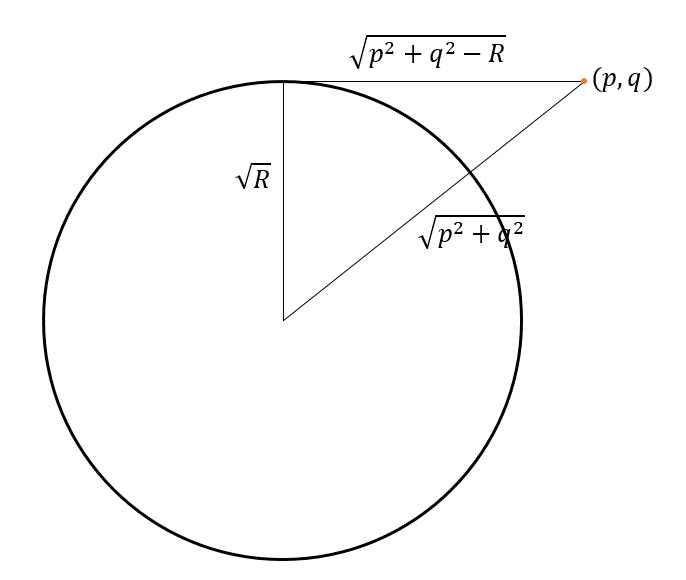

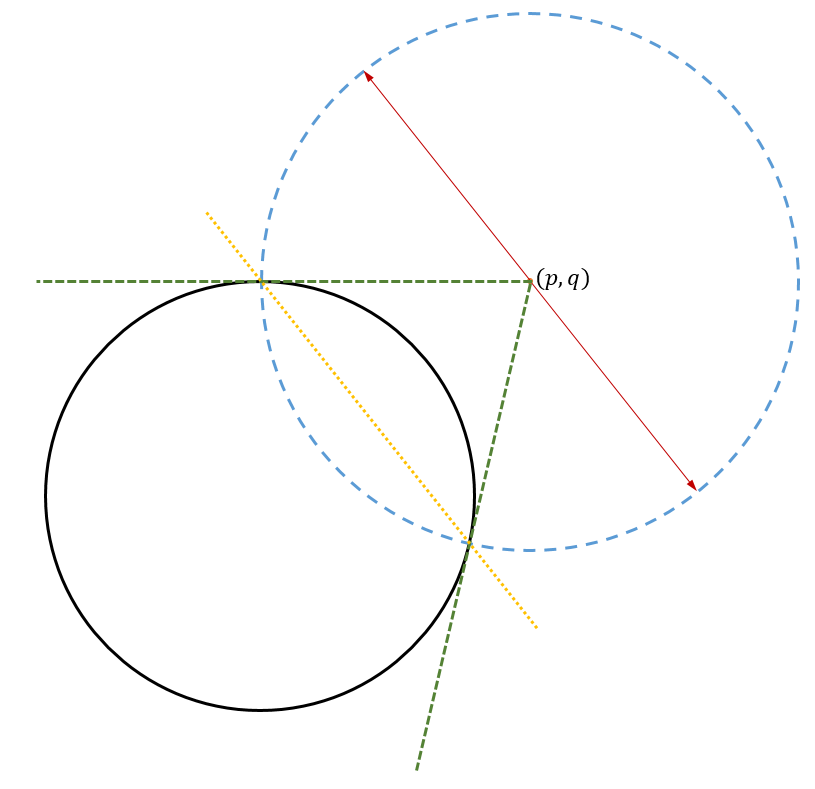
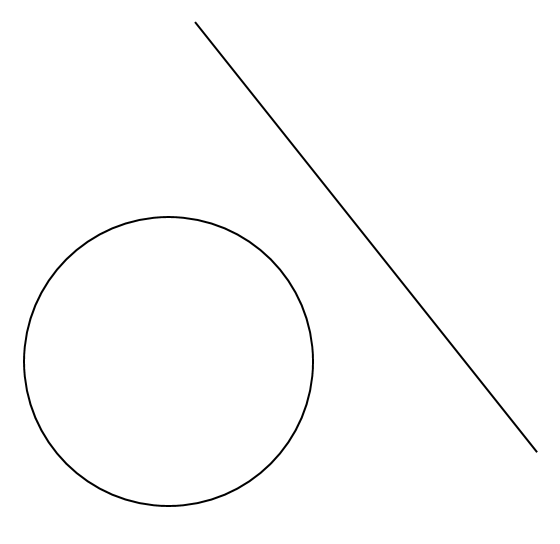
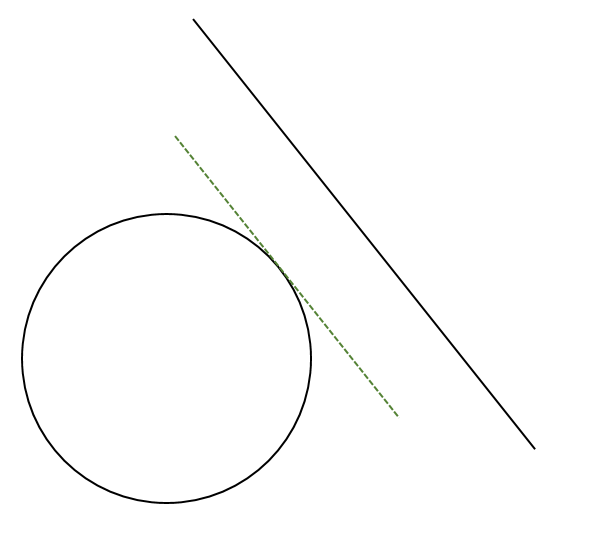


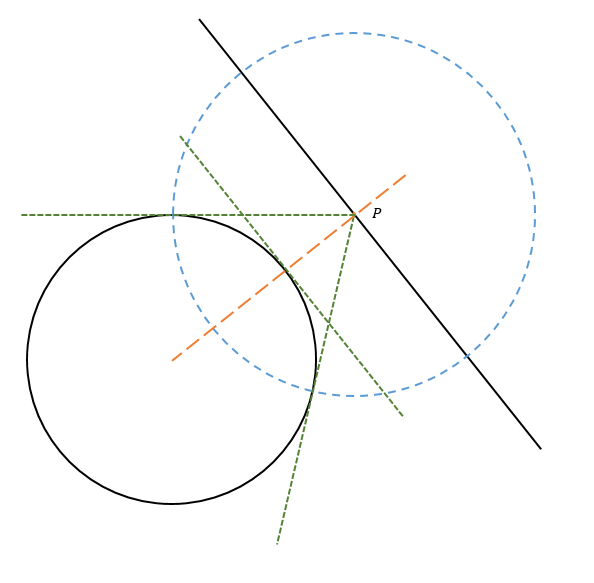


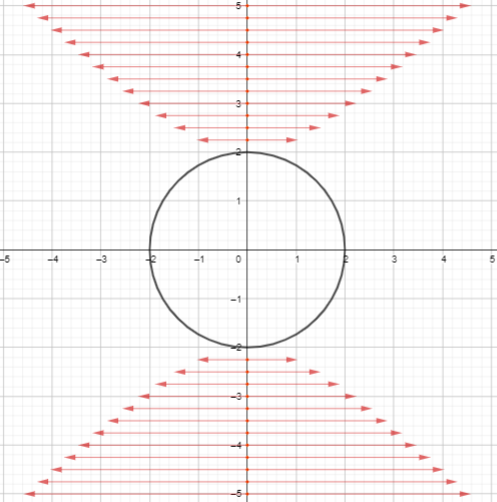
The set of circle points fits so well with your calculations that it makes the arrows look real
If you just look at the numbers in this formula it is very confusing and you feel like giving up
math is really cool, but for some reason every time I study I get really dizzy